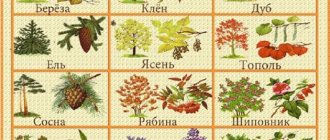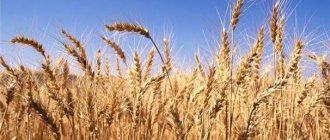Tomato
The edible part of this type of vegetable is the berry, which is filled with seeds. They are well absorbed in the body and contribute to the normalization of the gastrointestinal tract.
Tomato
Tomato
This semi-shrub and very unpretentious plant is better known as tomato. It appeared in Russia only in the 18th century. Tomato contains a lot of useful substances that have a beneficial effect on the human body. Tomato bushes can reach a height of up to 2 m. Interesting fact: people have long considered tomatoes to be poisonous. In Rus', peasants even refused to plant them.
Dessert
Vegetables of this type are mainly used by confectioners. Plants are used to make pies, jam, etc. The group is represented by 3 types of vegetables.
Artichoke
Artichoke
This is a perennial plant that is shaped like a small green cone. Artichoke cultivation began about 5 thousand years ago. Due to its unpretentiousness, the plant quickly spread throughout the globe. Contains a large amount of vegetable protein.
Asparagus
Asparagus
An annual plant with highly branched shoots up to 150 cm long. The leaves are small and scaly. The plant contains valuable vitamins and minerals. Asparagus is low in calories, so it is often included in various diets.
Rhubarb
Rhubarb
A perennial plant with a thick rhizome. The flowers are white, bisexual. Used in both cooking and medicine. The height of the stem in some species reaches 250 cm. Cuttings are mainly used for food.
Legumes
This family differs from the rest in that the fruits of legumes are pods containing peas for food. They can be eaten both fresh and processed.
Peas
Peas
This is a perennial herbaceous plant that is eaten by people and animals. The fruits are pods reaching a length of 8 cm. The peas are round or angular in shape. Archaeological research shows that peas have been consumed by people since the Stone Age.
Interesting fact : green peas are the first vegetable to be canned in metal cans.
Beans
Beans
A perennial plant with fruits up to 20 cm long. It came to Europe after the Columbus expedition. Beans contain a large amount of protein, similar to that found in meat. In their raw form, many varieties of the plant are poisonous, so they must be subjected to heat treatment.
Lentils
Lentils
An annual plant native to Southern Europe. The stem can reach a height of 75 cm. Lentils are mentioned in the Old Testament. The plant contains a lot of easily digestible protein, as well as a number of vitamins and minerals.
Cereals
They are high in protein and carbohydrates. The composition also includes a number of useful and easily digestible substances that have a beneficial effect on the human body.
Corn
Corn
This is a type of annual plant conventionally divided into 9 botanical groups. The stems can reach a height of 3 m, the growing season lasts up to six months. This is a heat-loving plant, demanding light and soil quality.
Bulbous
A distinctive feature of bulbous plants is the edible underground part. It can be consumed both raw and processed. Due to their high content of caustic substances, bulbous plants are used as a prophylactic against colds.
Onion
Onion
This is a valuable perennial crop that provides the human body with a whole range of vitamins and minerals. All parts of it are considered edible. Onions have anti-inflammatory and antimicrobial properties. This plant is also used to normalize intestinal function and improve immunity. The juice is used to resolve bruises and scars.
Garlic
Garlic
Thanks to its unpretentiousness, garlic is cultivated all over the world. The perennial plant contains many useful substances that have a positive effect on human health. Garlic is used to remove parasites from the body, as well as in the treatment of colds.
Spicy
Spicy plants are mainly presented in the form of herbs, which are used as seasonings in the preparation of various dishes. From some, essential oils are obtained that are used for medicinal purposes.
Dill
Dill
Belongs to the Umbelliferae family. Represented by one species. Has a strong spicy odor. The stem can reach a height of 1.5 m. This light-demanding plant can be found on almost all continents of the planet. Dill is used not only in cooking, but also in medicine.
Basil
Basil
An annual plant that is used as a seasoning in the preparation of various dishes. It appeared in Russia in the 18th century and was originally used as a medicine. Basil leaves contain a large amount of essential oils and other beneficial substances, which is why they are used in various industries.
Savory
Savory
An annual plant grown on the shores of the Mediterranean Sea. It is used in medicine as an antibacterial agent and in cooking as a seasoning for various dishes. This is an unpretentious plant with entire leaves. In recent years, attempts have been actively made to expand the range of savory.
Tarragon
Tarragon
Perennial plant. One of the varieties of wormwood. Included in the Red Book of Russia. Most often, tarragon can be found on dry steppe slopes or in fields. The stem can reach a height of one and a half meters. Used as a seasoning in the preparation of various dishes. Tarragon is the main component of the famous refreshing drink Tarragon.
Marjoram
Marjoram
is a perennial herbaceous plant. The height of its branched stems rarely exceeds 45 cm. The leaves have an oblong-ovate shape. Used in cooking as a seasoning and in medicine to improve digestion. Also has a diuretic effect. This is a valuable honey plant that tolerates high temperatures well.
Pumpkin
This family has found wide application. Plants are used in many branches of human activity, from cooking to landscape design. About 600 types of vegetables are classified as pumpkin.
Pumpkin
Pumpkin
An annual plant of large size. Often used as a dietary vegetable. Pumpkin contains many useful vitamins, as well as potassium and iron. A substance is obtained from the plant that is used to combat tubercle bacilli.
Cucumber
Cucumbers
This annual plant has been cultivated for about 6 thousand years. Cucumbers appeared in Russia around the 16th century. The plant has a low calorie content, which makes it an indispensable component of almost all diets. The size of the fruit can reach 30 cm. Cucumbers can eliminate the acid imbalance of the body.
Zucchini
Zucchini
This is a bushy perennial plant native to America. The fruit size can reach 40 cm. Zucchini has a rich chemical composition, which includes many useful substances. The plant is able to remove excess fluid from the human body, which normalizes kidney function.
Squash
Patisson
An annual herbaceous plant used in cooking. The name can be translated from French as pie. This is a bush-shaped plant with small fruits. They are consumed both raw and processed. Patisson is very demanding of moisture and soil, as well as heat. The plant reproduces by seeds.
Tubers
This includes only three plants - sweet potato, Jerusalem artichoke and the more famous potato. Their peculiarity is that in all these species the edible part of the plant is located underground and is represented by tubers.
Sweet potato
potato
It is also called sweet potato. It grows in countries with tropical climates. The tubers can be visually described as a cross between frozen potatoes and beets. In Russia, its cultivation occurs only in the southern regions. The fact is that the plant is very demanding on air temperature and humidity. Sweet potatoes are good for the heart, digestion and immunity.
Potato
Potatoes
This is one of the most popular vegetables. Now it is grown in 150 countries around the world. It appeared in Russia under Peter I. Botanists classify potatoes as members of the nightshade family. The tubers of the plant are edible. Thanks to the beneficial substances it contains, potatoes help remove toxins and excess water from the body.
Jerusalem artichoke
Jerusalem artichoke
It is also called tuberous sunflower.
It came to Europe in the 17th century; before that it grew only in America. Jerusalem artichoke is grown not only for people, but also as a fodder plant for livestock. Tubers can be consumed both raw and boiled. They are often used to make delicious salads.
Salad
These plants are often used in preparing various dishes. Salad vegetables are conventionally divided into leaf and cabbage varieties. They differ from each other in structural features.
Leaf lettuce
Lettuce
It is also called green salad. This herbaceous plant was already known in Ancient Rome. People appreciated it for its excellent taste. The leaves contain a lot of carotene, which has a beneficial effect on vision. Regular consumption of salad can prevent the development of Alzheimer's disease.
Roots
This includes 10 plant species. All of them are distinguished by specially shaped roots that are suitable for human consumption. They are eaten both raw and in the form of various dishes. Root crops are mainly grown in open ground.
Carrot
Carrot
This is a biennial plant belonging to the Umbelliferae family. It is distinguished by a large number of vitamins in its composition and other beneficial properties. Cultivation of carrots began in Ancient Greece, from where it gradually spread to all continents of the planet. Due to the high content of the beta-carotene enzyme in this vegetable, the plant has a positive effect on visual acuity.
Fun fact : Before cultivation, carrots in the wild were purple. Breeders gave it an orange color.
Parsley
Parsley
It is also classified as an umbelliferous plant. Historians believe that the cultivation of parsley began in Ancient Egypt. There is a beautiful legend about this: it was originally grown as a decoration and for ritual purposes. The fruits contain a lot of essential oils, and parsley is superior to many vegetables and fruits in terms of the vitamins it contains.
Radish
Radishes
Radishes are grown in many countries. Both root vegetables and foliage are eaten. The vegetable is valued for its early ripening. The process of root crop formation in greenhouse conditions takes about a month. Contains a number of useful vitamins necessary for the normal functioning of the human body. It tolerates replanting well and is not picky about soil quality.
Beet
Beetroot
Beetroot cultivation began in the Mediterranean even before the beginning of our era. Originally used as a medicinal plant. Only the leaves were eaten. Root vegetables began to be eaten around the 4th century AD. Due to its high potassium and folic acid content, beets are good for lowering blood pressure.





